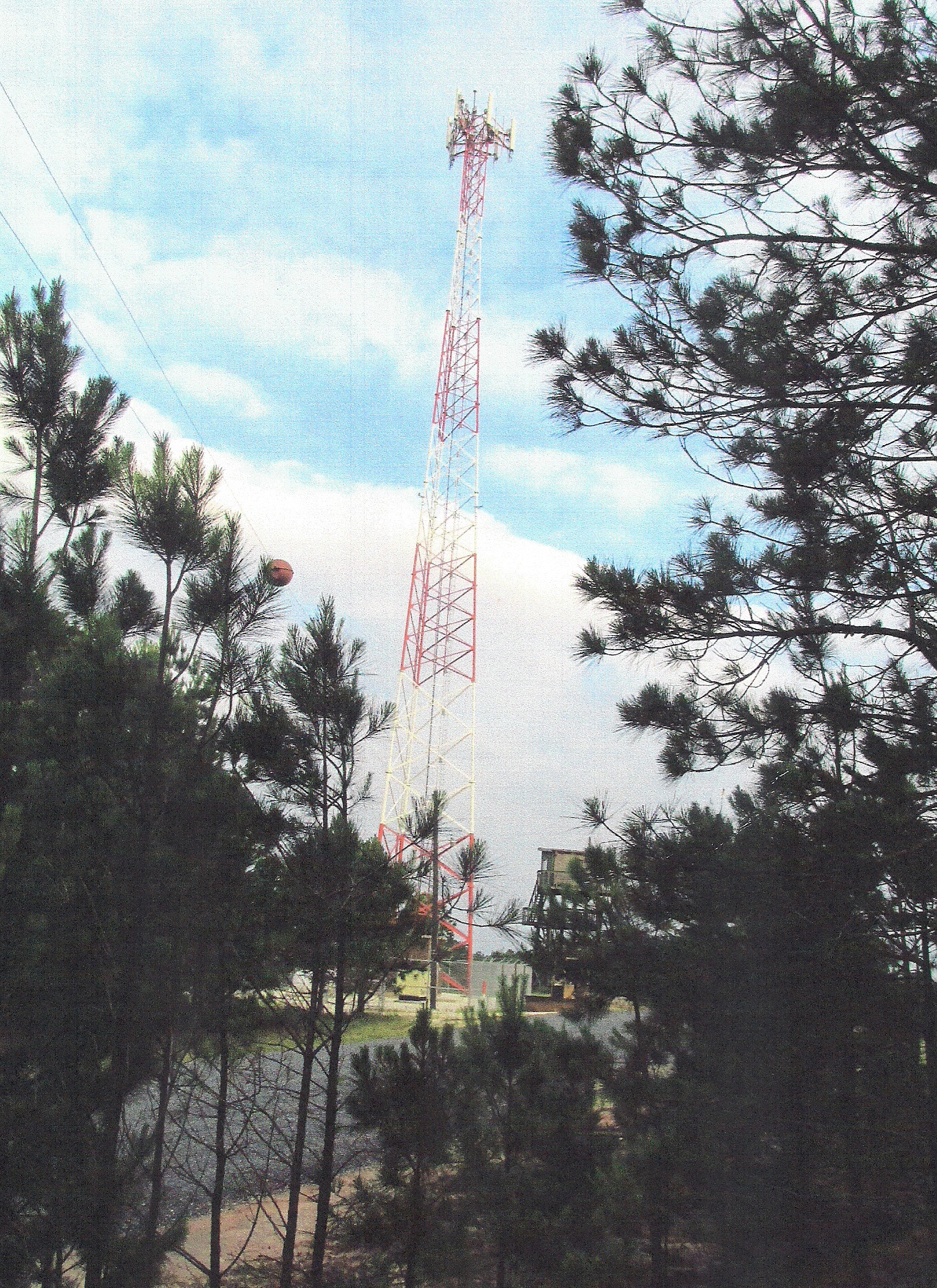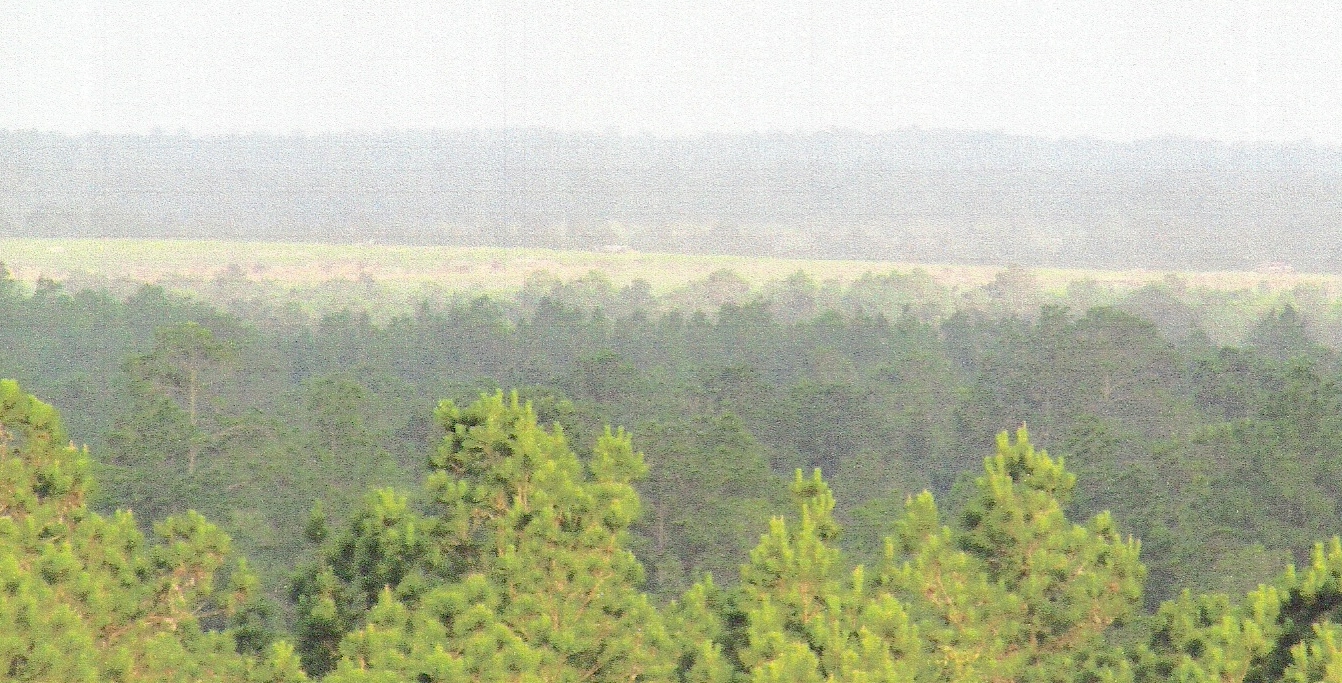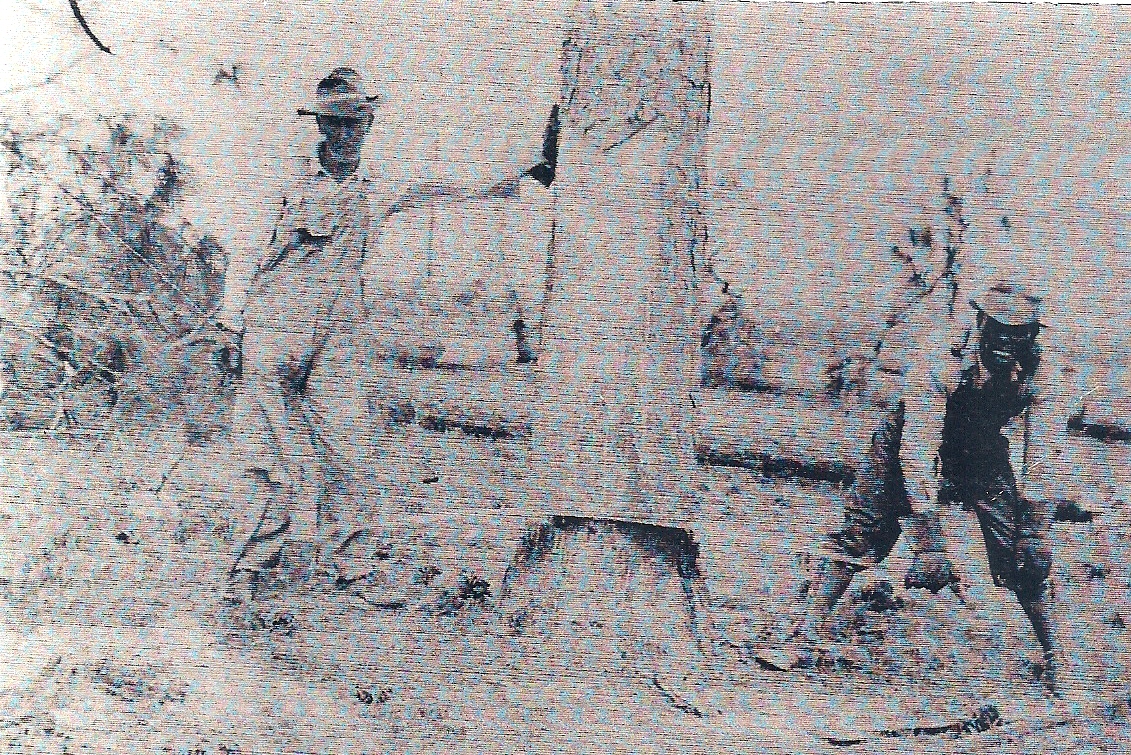REMEMBERING EAGLE HILL
BY RICKEY ROBERTSON
In most communities there is one location that is special and very unique. Some communities have buildings, bridges, houses, creeks, and other unique items that pertain to that location. But to the folks who live in Peason, Louisiana we also have a landmark that is special to each and every one of us and is also of historic interest. Do you know what we have at Peason? We have Eagle Hill! Eagle Hill is the second highest point in the state, with Driskoll Mountain in North Louisiana being the highest point. At one time after all the timber had been harvested by Peavy Wilson Lumber Company, you could see Eagle Hill looming on the horizon. Now with the timber having grown back around it, you can't actually see the old hill from La. Hwy. 118 anymore. But you can know the exact location because you will see a very large and tall radio tower reaching skyward that is located right on the top of Eagle Hill.
Let's look at a little history of Eagle Hill. If we were to go back many hundreds of years before the white man came into this area, we would find tribes of Native American's living on and near Eagle Hill. There were Caddo's, Aii's, Adai, and other tribes native to this area, but there was also visitors. Eagle Hill has been called by archaeologists as the "Walmart" of Indian artifact sites due to so many artifacts having been found over the years near there. And Indians traded many things among tribes, and one thing that has been found is a white chirt flint rock used to make arrowheads, knives, and other needed tools. This chirt is now known as "Eagle Hill Chirt" by archaeologists. And guess what? It is a type of flint rock that is not native to Louisiana! These rocks were brought from several locations in Arkansas and were of great value to the tribes. Many years ago the University of Texas came and did a large archaeological dig between Eagle Hill and the present day Peason Forward Landing Zone. Artifacts of all types were dug at the site. But these archaeologists were puzzled why they were finding artifacts that came from the Plains Indians, such as the Kiowa and Comanche in Louisiana. The first thought was these artifacts had been received in trade, which is possible, but I was able to share some information with them that helped them understand how these items came to the area near Eagle Hill. The most staple food of the Plains Indians was the buffalo, and these animals would ford the Trinity, Neches, Angelina, and Nacogdoches Rivers and then they would arrive at the Sabine River, where they forded this last river and they would be in their winter grazing lands on present day Peason Ridge. And with their food source right here on the grazing lands of Peason Ridge, guess who visited our area…yes the Comanche and Kiowa and other tribes!
As the lands around this area began more settled and the buffalo were killed out, the Native Americans moved away from this area. But people traveling west found the lands of Peason Ridge and settled here. These homesteaders and sharecropper families were subsistence farmers who were self- supporting. Over the many years these families ran herds of cattle, horses, sheep, goats, hogs and other stock all over these lands. But in 1917 Peavy Wilson Lumber Company moved in and established the sawmill town of Peason. Peavy Wilson Company owned over 45,000 acres of timberland and Eagle Hill was located in this area. As the town of Peason grew to have over 2000 people living there, my Grandmother told me a story of Eagle Hill. The pine timber covered Eagle Hill and grew tall. And do you know what resided there? Yes, bald eagles lived and nested on this great hill for generations and now you know why it is named Eagle Hill. My grandmother told me that during nesting season the residents of Peason would not let babies and young children go unattended outside of their houses, and also small pets were not let outside due to the large eagles swooping down and carrying them away to a nest on Eagle Hill. But over the years the vast pine forests were cut down and in 1934 the very last tree cut for the Peason Mill was cut on the top of Eagle Hill. The flathead crew that cut the last tree was made up of Jim Oxley, a White man and an unidentified Black man. Eagle Hill was now bare. In 1941 the Louisiana Maneuvers came through this area and on top of Eagle Hill the Signal Corp built a large tripod in which signal flags could be flown and seen by the various military units. The remains of the old concrete blocks for this tripod are still on Eagle Hill. And during the Vietnam War the U.S. Air Force had an Air Force Station located here. It was manned by Air Force personnel who were in charge of the range and who controlled all the flights of fighter-bombers coming onto the range to bomb and strafe. All types of targets were placed on the range and from Eagle Hill the air Traffic Controllers could direct each aircraft into various target sites. Both day and night flights came and went over Eagle Hill. And after the Vietnam War ended the range was still used by the 23rd Tactical Fighter Wing (Flying Tigers) from England Air Force Base extensively. And at Eagle Hill new scoring systems were set up so that each jet could be scored on its bombing and strafing performance. But in 1992 England AFB closed and the Air Force pulled out and the Joint Readiness Training Center took over Peason Ridge and Eagle Hill. All the old Air Force equipment and towers were torn down, the old foundations for the WWII tripods were overturned, and the road and appearance of Eagle Hill changed. Today the old Air Force compound is used by contractors making targets for the Impact Area and a large building to house fire trucks and equipment has been built to house this equipment when the JRTC conducts air landing operations on the Peason Forward Landing Zone. Now Eagle Hill has the large radio tower sitting on top of it and an artillery observation tower also there (we have named this tower Eagle's Roost). The missions of both the Army and Air Force have changed but Eagle Hill is still there. Yes, it is our landmark in Peason. And I used to love to hear the late Louie Raiford tell people that he lived at the foot of Eagle Hill! Yes, we are proud to have this landmark right at our door. And guess what, my wife and I have seen some eagles out on Peason Ridge. I wonder if they are looking for their ancestors home on Eagle Hill, so they also can nest and raise their young ones there.
.jpg)
Large building built by the US Army to house fire fighting vehicles and equipment. Located at the foot of Eagle Hill. (Robertson Collection)
.jpg)
.jpg)
.jpg)
.jpg)
.jpg)


